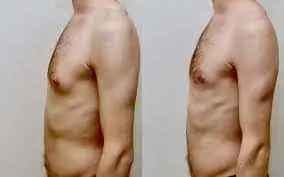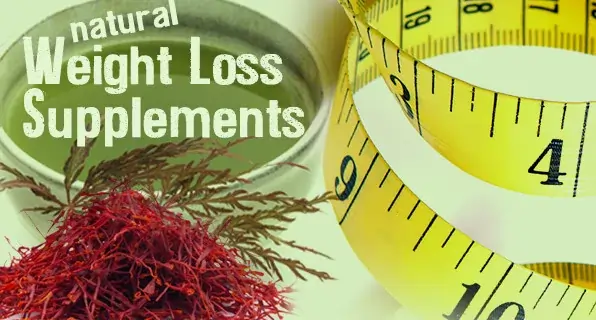Chest Fat vs Gynecomastia
Chest fat (pseudogynecomastia) and gynecomastia are common conditions in males that cause an enlarged chest appearance but have different underlying causes.
Chest Fat: This is the accumulation of excess fat in the chest area, often due to overall weight gain or obesity. It is not linked to hormonal imbalances and can typically be reduced with weight loss, exercise, and a healthy diet.
Gynecomastia: This is the enlargement of male breast tissue caused by a hormonal imbalance, specifically an increase in estrogen or a decrease in testosterone. It often requires medical evaluation and may need treatment ranging from medication to surgery, depending on severity.
Understanding the difference is essential for choosing the right approach to manage or treat these conditions.
What is Chest Fat?
Adipose tissue, or body fat, that develops in the chest region is referred to as chest fat. Many people experience this problem frequently, and it is typically linked to an overall rise in body fat. A condition known as “man boobs” can result from the build up of extra fat in the chest and other parts of the body.
Chest fat causes:
- Being overweight or obese is one of the main reasons why people have too much fat around their chests. Gaining weight usually causes a person to build fat in several places, including the chest.
- Poor Diet: Eating a lot of processed foods, carbohydrates, and bad fats will make you gain weight, which can lead to the formation of chest fat.
- Lack of Exercise: Sedentary lifestyles can raise body fat percentages, including those in the chest.
- Hormonal Changes: Age-related hormonal changes, poor diet, and inactivity can sometimes encourage a buildup of fat in the chest region.
Ways for Losing Chest Fat:
- Diet: Eat a diet low in calories and high in full, natural foods including fruits, vegetables, and meats. If you wish to reduce your chest fat, you must reduce your entire body fat percentage. It is impossible to target chest fat loss alone without also losing weight overall.
- Exercise: To lose chest fat, cardiovascular and strength training are crucial. Running, jogging, swimming, and cycling are examples of exercises that can increase fat and calorie burn. Strength training exercises that target the chest mainly, like push-ups, bench press, and chest fly, may help tone and build pectoral muscles, making the chest appear more attractive.
- Surgical options: If you struggle with chest fat that doesn’t go away with diet and exercise, liposuction may be a good alternative. To examine the procedure’s risk-benefit ratio and to find out if it is the right course of action for your situation, you can speak with one of our surgeons.
What is Gynecomastia?
A disorder called gynecomastia causes men’s breast tissue to grow. In contrast to adipose tissue, which makes up the majority of chest fat, gynecomastia is caused by the development of glandular tissue in the breasts. The breast tissue may become rigid or tender as a result of this disorder, which can affect one or both breasts.
Gynecomastia causes:
- Hormonal Imbalance: Most often, gynecomastia is caused by an imbalance between the male hormone, testosterone, and the female hormone, estrogen. During puberty, hormonal changes may result in the temporary development of gynecomastia. In adults, it can be caused by either a decrease in testosterone or an increase in estrogen.
- Aging: Because men’s testosterone levels typically decrease with age, gynecomastia may result from a corresponding rise in estrogen levels.
- Obesity: While it is associated with chest fat, obesity can also lead to gynecomastia. The production of estrogen may rise as a result of excess fat, which may then stimulate the development of breast tissue.
- Health problems: Gynecomastia can be caused by many medical problems that affect hormone levels, including liver illness and renal failure.
- One of the negative effects of certain medications is gynecomastia. Prostate cancer treatments, steroids, antidepressants, and several anxiety medications are among them.
- Alcohol Usage: Gynecomastia has been connected to the use of alcohol, steroids, or marijuana.
Signs and symptoms:
- Breast tissue growth or swelling.
- Breast pain or tenderness.
- Rubbery or firm bulk beneath the nipple.
- Asymmetry in certain situations. (Differences in breast sizes)
Gynecomastia Treatment:
Various approaches can be used to treat gynecomastia, a disorder in which men have an excess of breast tissue, depending on its severity and underlying reasons.
- Your doctor could advise a wait-and-watch strategy if you have minor gynecomastia that develops during your teenage as a result of hormonal changes. The extra breast tissue may start to disappear on its own as your hormones level out.
- Medications: Anti-estrogen medications, such as tamoxifen, may help reduce breast tissue in some situations. This usually works only, though, if hormonal imbalances are the cause of the gynecomastia.
- Surgery: Surgery may be required if gynecomastia continues to cause substantial distress. Gynecomastia is mostly treated with two methods;
Liposuction: This procedure can eliminate extra chest fat if there is a substantial quantity of fat but little glandular tissue.
Mastectomy: When glandular breast tissue is thick or fibrous, it is removed during this more invasive treatment.
- Lifestyle Modifications: When obesity or excess fat is a significant factor in the disease, losing body fat through exercise and a nutritious diet can be beneficial.
How to Determine the Difference Between Chest Fat and Gynecomastia:
Although an expanded chest fat may develop in both illnesses, there are some important differences;
- Chest Fat: Mainly caused by the buildup of body fat in the chest region. Typically, the tissue is softer and more uniformly distributed.
- Gynecomastia: Gynecomastia is characterized by the development of glandular breast tissue, which may feel harder or more painful than fat. It may result in asymmetry and frequently manifests as a lump or swelling under the nipple.
It is advised that you speak with a doctor if you are worried about the way your chest looks. They will assess your particular ailment and offer an accurate diagnosis, allowing for a suitable therapy strategy specific to your specific requirements.
Chest Fat vs Gynecomastia:
To differentiate between gynecomastia and chest fat, it is essential to evaluate symptoms. Even though the two conditions might seem similar, there are several obvious variations to be careful of;
Chest fat:
- Chest fat, however, is much less likely to cause soreness or pain.
- When there is chest fat, the texture feels soft to the touch, just like when there is fat elsewhere in the body.
- Chest fat may not have a clear contour like gynecomastia, and it frequently looks droopy or sagging.
- If chest fat is present, weight loss should result in at least a slight decrease in the size of the pectoral region. Chest fat, being a component of total body fat, reacts to food and exercise in the same manner as other body fat.
Gynecomastia:
- Generally speaking, gynecomastia can cause minor to severe pain, which would show up as chest soreness or tenderness.
- In situations of gynecomastia, the chest typically has a solid texture, possibly feeling hard or rubbery under the skin. Additionally, there may be a noticeable bulge.
- In gynecomastia, the chest is often round, reasonable, and somewhat like a woman’s breasts. When less tissue is present, the nipple-areolar complex may protrude more than the chest as a whole.
- Even after losing a significant amount of weight, having less weight may not result in a noticeable decrease in chest size. In certain cases, weight loss may increase the visibility of glandular tissue as surrounding fat decreases.
Summary:
Men frequently mistake excess fat for gynecomastia when it comes to chest appearance. Although the chest region may appear enlarged in both conditions, their underlying causes and treatment methods are different. Knowing the difference between gynecomastia and chest fat is essential to choosing the best course of treatment.
Although gynecomastia and chest fat can both make men feel self-conscious about their looks, knowing the difference between the two is essential to choosing the best course of action. Although diet, exercise, and lifestyle modifications can usually reduce chest fat, gynecomastia may need medical or surgical intervention if it is uncomfortable or continues.
Getting advice from a doctor who can assist in diagnosing the problem and suggesting suitable treatment choices is crucial if you are uncertain whether your condition is caused by gynecomastia or extra fat.
FAQ:
What makes gynecomastia different from chest fat?
The fat in the chest: Excess fat buildup around the chest region can be carried on by weight increase, inactivity, or a bad diet. No glandular tissue is involved.
Male breast tissue expansion caused by hormonal imbalances, known as gynecomastia, is frequently brought on by puberty, aging, certain drugs, or illnesses. In addition to fat, glandular tissue also grows as a result.
Gynecomastia: what causes it?
It is mostly caused by hormonal imbalances, specifically a rise in estrogen or a fall in testosterone. Puberty, aging, obesity, liver illness, alcohol, some medications (such as steroids or anxiety medications), and other medical disorders are common causes.
Do gynecomastia symptoms go away on their own?
Gynecomastia frequently goes away on its own as hormone levels level off, particularly around puberty. If weight gain is the cause of the disease in adults, lifestyle modifications including exercise and weight loss may be beneficial. Medical intervention might be required, though, if hormonal imbalances or other underlying factors cause the problem.
How soon should I consult a physician about gynecomastia?
It’s essential to consult a healthcare professional if you experience pain or tenderness or if you observe a persistent breast tissue enlargement that doesn’t go away. Identifying the reason may involve a physical examination and the ordering of tests (such as imaging or blood testing).
Can both sides of the chest be affected by gynecomastia?
Indeed, one or both breasts may be affected by gynecomastia. It could be asymmetrical (occurring on just one side) or symmetrical (occurring on both sides).
Can gynecomastia develop from chest fat?
Obesity can result in gynecomastia in addition to chest fat. Because estrogen is produced by fat cells, your estrogen levels will increase as your body fat percentage increases. Consequently, estrogen leads to the development of breast tissue.
Is it possible for chest fat to go away?
The majority of people can lose chest fat by eating a balanced diet and exercising frequently. There are numerous variations of this style of exercise, from strength training to high-intensity interval training. In most cases, it is advisable to combine several forms of exercise. An illness may also be the cause of excess body fat.
Is it possible to reduce gynecomastia with chest exercises?
Although chest exercises can assist tone muscles and reduce body fat overall, they are unable to address glandular tissue growth in gynecomastia specifically. It’s crucial to speak with your family physician about the best course of action.
In comparison to chest fat, is gynecomastia a major health concern?
Although a changed body image can cause emotional distress in both disorders, gynecomastia may be a sign of underlying hormonal problems that require treatment.
Can chest fat be confused with gynecomastia?
Yes, it can be, particularly in guys who are obese or overweight. Thus, it is essential to have your family doctor perform a physical examination if you notice any changes in the area of your chest.
Can gynecomastia and chest obesity happen at the same time?
The answer is that gynecomastia and extra chest fat can coexist in the same person. In certain situations, a mix of exercise, weight loss, and medical or surgical treatment can be required.
References:
- How to distinguish gynecomastia from chest fat. (undated). This article explains how to distinguish between gynecomastia and chest fat.
- Surgery, C. F. (September 1, 2024). The way to tell the difference between chest fat and gynecomastia. The Surgery Center. https://centerforsurgery.com/gynecomastia-vs-chest-fat/#:~:text=Gynecomastia frequently feels firm or gives the appearance of enlarged breasts.
- Clinic, C. May 16, 2024. How Does Chest Fat Differ from Gynecomastia? Ask the expert: https://www.cadoganclinic.com/body-and-breast/gyno-surgery-vs-chest-fat
- Team, P. C. (January 8, 2025b). Pristine Care: Gynecomastia vs. Chest Fat. Pristine Care. Gynecomastia versus chest fat: https://www.pristyncare.com/blog/



